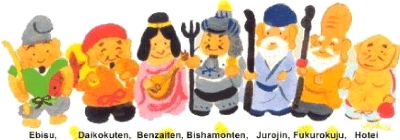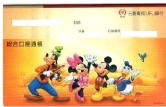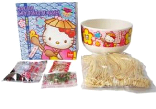|

MASCOTS IN JAPAN
___
In 2014, mascot characters were elected as the 2nd hit product
of the year in Japan. This represents opportunities for western companies and
institutions to strategically integrate themselves into the local culture and
communicate more efficiently with Japanese target audiences.

Flora MITSUSHIMA - International Global
Communications - 4B - 2014/2015
Tutor: Ms ALBRYCHT
Thesis Director: German SAA, Deputy Director of
International Operations, KYODO PR - Tokyo, Japan
2
Table of contents
Acknowledgment 3
Introduction 4
I. Background on Japan's culture to explain the increase
of mascots'
importance 6
1.1 Characters in Japan, an old tradition 6
1.2 A country where cuteness exudes from everything 10
1.3 Omiyage, the travel's souvenir culture 11
II. Current status of mascots in Japan 13
2.1 Three ways for using mascots 13
2.1.1 Companies 14
2.1.2 Gotochi Kyara, the place branding 16
2.1.3 How Japanese public institutions soften their powers ?
20
2.2 When mascots are not enough to save a brand image:
TEPCO/Fukushima 22
III. Use mascots to communicate with Japanese audiences
24
3.1 Choosing mascots instead of humans 25
3.2 Creating a mascot : what kind of mascots should be created in
order to avoid
failure? 26
3.3 How to use mascots through traditional
communication tools to better reach
goals? 28
Conclusion 32
Bibliography 34
Appendices 42
3
Acknowledgment
During my stay in Japan in 2013, I worked for a PR Company
that made me understand that Japan was a country that had nothing in common
with any other country, not only in terms of culture but also in terms of
communication. From brands to people or even between people. Thus, it seemed
logical for me to focus on an aspect of what made Japan so special : its
relationship with mascots.
I did not do a glossary, as I thought it would not be
convenient for the lectors to always search for Japanese words'
definitions, but the only word that people has to remember as I used it
really often is « Kawaii » which means « lovable
», « cute », or « adorable » in the context
of Japanese culture.
I would like to thank all the people who helped me through
this applied research paper. First, I would like to thank M. SAA German, my
thesis Director for its valuable assistance, as usual, despite the distance. I
am also grateful to M. TEJIMA Takuya, for answering my interview.
Finally, I want to thank Ms. ALBRYCHT, who helped me in my
thinking for my researches and analysis.
Introduction
« The Tokyo Olympic Games 2020 will be a huge
opportunity for Japan to introduce and spread mascots across the world
»1
Kenichi Mogi - Senior Researcher at Sony Computer Science
Laboratories
In 2020 Tokyo will host the summer Olympic Games. Its official
mascot is not yet elected but the chosen one will be the face of Japan across
the world.
Mascots are often used in sport to promote a team or a country
in competitions. French people who are born before 1986 remember the little
star of the Winter Olympic Games of Albertville in 1992. And those who were
born that year all know Footix which was the French Team's mascot for
the 1998 Football World Cup.
In France, mascots are also used in banking, with characters
such as LA CAISSE D'EPARGNE's squirrel or LE CRÉDIT LYONNAIS' lion which
was also the mascots for Le Tour de France. Yet these they are not really given
much attention and they tend to disappear. In December 2014, the Euro 2016
mascot Super Victor was introduced to the world and its reception has
not been as good as expected2. It is a fact that mascots are often
not as well accepted elsewhere as they are in Japan, known to be a country
where cuteness (also called kawaii) is celebrated like nowhere else.
Mascots are found everywhere; they have replaced celebrities and politicians as
spokespersons for commercial or institutional causes.
The Land of the Rising Sun had always demonstrated
animism3 (attributing life to the non-living) and has blurred the
boundary between human beings and nature. It's a country known for its «
talking animals characters » such as Hello Kitty or Pikachu (from
Pokemon), which are famous worldwide.
1 OOCHi, Debra, Yuru kyara, humanity, and the uncanny
instability of borders in the construction of Japanese identities and
aesthetics, Miyazaki International College, in progress.
2 MASSON, Morgane (November 30, 2014) « Super Victor, la
mascotte de l'Euro 2016, déjà moqué par les internautes
» in The Huffington Post.
3 BROWN Stephen, PONSONBY-McCABE Sharon, Brand Mascots: And
Other Marketing Animals, New-York, 2014, BROWN Stephen, PONSONBY-McCABE
Sharon
4
On November 2014, Dentsu Inc., the biggest Advertising company
in Japan and the fifth worldwide, announced its annual « hit product of
the year » ranking4. It announced the consumer mindset of 2014.
The movie « Frozen », « Talking mascots characters
» and « Tokyo Skytree » were the top three of this
list. In one year, mascots won more than 10 places in this ranking, and the
market of mascots now represents 30 billion euros per year5
In this memoire, I will try to show that the trend for mascots
is a huge opportunity for western organizations to strategically integrate
themselves into the Japanese local culture and communicate more efficiently
with Japanese target audiences.
Therefore, I will study Japanese culture to explain the
increase of mascots' importance. I will first research its traditions as the
foundations of its culture and how the country is grounded in a culture of
cuteness. Finally I will talk about the culture of Omiyage (souvenir)
which has led indirectly to a huge development of mascots business.
The second part will be dedicated to the current status of
mascots. Through case studies of companies, tourist hotspots and institutions,
I will show how big this trend is in Japan. This will be backed up by the
results of a survey I made through interviews and speaking directly to Japanese
people.
Finally, I will try to demonstrate how western companies can
use mascots to promote themselves and to better communicate towards the
Japanese. I will do this by first explaining why mascots are a relevant choice
that can easily reach everyone, what a company has to do to create a successful
mascot and finally how mascots can help to reach business objectives, both of
notoriety and sales.
4 Cf. appendix 1, Dentsu Press Release
5 VINCENT, Alice. (March 5, 2015). «Meet Funassyi: the
Japanese pear mascot who loves Aerosmith» in The Telegraph
5
I.Background on Japan's culture to explain the
increase of mascots' importance
The success of mascots is a trend which is more and more
important currently. We will see that characters are not new and have existed
for centuries in the Land of the Rising Sun but they are emphasized by the
Japanese's love for cuteness and the important concept of bringing back
souvenirs from any travel.
1.1 Characters in Japan, an old tradition
Japan has a strong tradition and culture of icons and its
religions and history are full of characters.
a) First appearance of honored icons in
religion
Japan's history has always been full of icons. And it started
with its 2 major religions the Shintoism and the Buddhism.
Shintoism is the Japan's indigenous religion, it is an
animistic religion: it means that they recognize that spirits and souls live in
living (fauna or flora) and non-living things. The sacred spirits, called
Kami, are the «gods» in Shintoism6. They take the
form of many things such as animals, plants, mountain or lakes. They must have
a strange and unique form, for example they are very old, big, extremely high
or difficult to reach.
The famous World Heritage Mount Fuji is considered as a
Kami, as well as some big old trees or waterfalls in villages.
They are here to protect people from evil spirits. When
important people die, they became Kami and are honored as Gods by
their families in their home own altars or public shrines, such as the Nogi
Shrine in Tokyo.7
In Shintoism, which is the most common religion in Japan, even
material objects have a soul. This belief, could be one of the major reasons
why people feel a strong
6 BBC Religions, «Shinto : Kami», 2009
7 Nogi Shrine's official website - http://www.nogijinja.or.jp/
6
personal connection with non-living things, and by extension,
characters and mascots.
|
In Buddhism, we meet constantly some Jizo
statues.8 They are protectors for travelers and children. Those
statues look like monk, they are wearing robes and have shaven head. It is used
to both scare away living creatures and to awaken people from their dream-like
world of illusion.
People can see statues in cemeteries, on road-sides and in
temples all over Japan. They often clean the Jizo with water to purify
them and give them food and drinks as offering.
|
|
|
Jizo Statue
|
The Seven Gods of Fortune called Shichi Fukujin are
also really popular in Japan.9 They are the seven gods of good
fortune in Japanese Buddhism's mythology and folklore.
Before the 15th century, Buddha was the god who wished
population good harvest and Japan's safe. But at the end of Muromachi era
(1336-1573), people started to think about their own success, wellbeing and
richness than their compatriots' ones . In order to be people's own lucky
charms, the Seven Lucky Gods were created.
This is the list of the Seven Lucky Gods:
1. Ebisu: god of fishers or merchants, often
represented carrying a fish
2. Daikokuten : god of wealth, commerce and trade, with
its bundle
3. Benzaiten : goddess of knowledge and art
especially music with her instrument in her hands
4. Bishamonten : god of warriors in its armor
5. Jurojin: god of long life with its long beard
6. Fukurokuju: god of happiness, wealth and
longevity with a big bald forehead
7. Hotei: the fat and happy god of abundance and
good health
8
9
7
CHAVEZ, Amy (March 31, 2012) « A guide to Jizo, guardian of
travelers and the weak » in Japan Times HARRISON, Edward & John, Idle
Idol, New-York, 2010, Jake Davis, 144 pages
8
The Lucky God Hotei, who loves foods and drinks, is seen
outside many restaurants as he is referred to be the patron saint of
restaurants owners and bartenders.
Ebisu and Daikokuten, for their part, are often
displayed in small and/or local retail shops to bring luck and prosperity to
their owner.
Some people say that Shintoism and Buddhism myths and beliefs are
the reasons why Japan has such a big affinity with mascots and characters and
why they are so prevalent in Japan.


Manekineko
b) Manekineko, the beckoning cat, a common Japanese
lucky charm.
People disagree about Manekineko's born
place.10 Some say it is from Edo11 some others believe it
is from Osaka.
In any case, this cat with its hand holding up and down is
believed to bring good luck to its owner. It is often seen in shop or
restaurants windows as it is believed to attract good luck and fortune for its
owners and make customers come.
The story began in the 17th century in Tokyo in a temple
called Gotokuji in the ward of Setagaya in Tokyo. A wealthy lord took
shelter from a rainstorm under a tree next to a temple where only a poor priest
was living with its cat. The man thought that the cat had beckoned to him and
walked toward the temple to follow him. A moment later
10 HARRISON, Edward & John, Idle Idol, New-York, 2010, Jake
Davis, 14
11 Tokyo City's previous Name - In reference to the Edo Period
(1603-1868)
9
a lightning struck the tree the lord had been standing under.
As the cat saved his life, he was so grateful, that he donated a huge amount of
money and brought prosperity to the priest and his temple.
This is how the Manekineko began to be the «
mascot of luck » in Japan. And now it is also often seen in front of
Pachinkos, that are kind of casinos (where prizes are not money but
gifts) to bring luck to the players.
c) Tanuki statues to represent Soba Noodles
Shops.
12

Tanuki Statues
A Tanuki is a kind of raccoon dog and also a mythical
creature in Japanese folklore. They often look the same : with a hat, a walking
stick, visible testicles (that are a symbol of chance) and a bottle of sake in
one hand and a sake shop's credit book in the other hand. This shows that he is
a credible and honorable succeeded character.
The town Shigaraki, in the Shiga Prefecture, in the center of
Japan, is famous for its ceramic sculptures since the Edo Period
(1603-1868).
At the beginning those sculptures were used as a way to bring
luck. It was a « mascot » in the true sense of the word13.
But after, in the late 19th century, it started to be used to
identify « soba noodles » restaurants where you can order a popular
dish called tanuki soba14 .This is why the chosen mascot
was a tanuki.
Because of the media coverage, after the Emperor Hirohito's
visit in 1951, those statues became so popular that even Tokyo's shop wanted to
have statues outside their restaurants to show they sold the dish.
The city of Shigaraki was so proud of this success that it
created a « tanuki day » on November the 8th. (It was when the
Emperor came in the town in 1951).
Still now, statues of tanuki are often found outside
many restaurants and bars, beckoning at customers and welcoming guests.
12 Def: Noodles made from buckwheat
flour
13 Def: From the French word « Mascotte » that
means talisman/charm
14 Soba with deep-fried tofu and ginger
10
As we said, Japan has a strong tradition, history and culture
which are full of characters and the boundaries between human beings and nature
have always been blurred. What was just a belief or an icon, became a mascot
through the centuries.
1.2 Japan, a country where cuteness exudes from
everything
As explained, Japan has a strong relation with its characters,
but it is emphasized by the omnipresence of Kawaisa culture, which
could be translated as «cuteness».15
According to Rebecca DYER16, people love cute
things because it has a positive-affect and almost bring a loss of control. It
allows people to escape from their mind, their problems and their daily
life.
The archipelago is known to be a country where people have to
deal with a lot of pressure from their childhood. They have to enter famous
universities, workers have to sacrifice themselves for their companies with
enormous amount of overwork time, and Japanese tend to be afraid toward the
adult working life. This is why, through their kawaii culture, they
keep a kind of eternal youth refuge with no pressure and no obligations. The
cute characters become for them a way to healing and comfort.17

MUFG Mickey Club Passbook
Everybody is concerned by this wave of cuteness. From junior
high school students to salarymen, everyone has its cellphone with a strap
featuring a mascot or anime's character such as Hello Kitty or Winnie the Pooh.
In a nation obsessed with all things cute, there is nothing that has not
something cute. For example, the famous bank MITSUBISHI UFJ offers its clients
the choice between a casual or a Mickey Mouse and Friends stamped passbook and
debit card.
15BIRKETT Mary, THE PRAGMATICS OF KAWAII (CUTE),
University of Michigan, 2012
16 GAYLE Damien. (January 23,2013) «How cute animals on the
internet bring out the savage» in Daily Mail.
17 MATTHEW Alt, YODA Hiroko, Hello, Please!, San Francisco,
Chronicle Books
11
Even pets are concerned : it is not unusual to see some dogs
wearing anime branded clothes such as Lilo & Stich rain coats or
Toystory,'s shoes in Tokyo.
In fact, everything in the Land of the Rising Sun might be
considered as kawaii. Babies are kawaii, a cake is
kawaii, a hair style is kawaii even a pair of eyeglasses can
be kawaii.
Japanese men like girls with childish faces and behaviors.
They want their women to be submissive and prefer a kawaii woman to an
elegant woman with a strong character.
Childish attitudes are accepted and encouraged, so the
attraction for mascots is a direct consequence : Japanese are attracted by cute
and fragile character that they can take care of.
1.3 Omiyage, the travel's souvenir culture
Omiyage is translated as « souvenir » in
English, but the two are a little different.18 Basically, a souvenir
is something that the traveller buys for himself to remember its trip. In
Europe or in USA, it is easy to find stores filled with goodies and non-food
items branded with the name of the place.
But in Japan, omiyage typically consists of food
items produced in the area the trip was taken in (i.e., sweet potato pie from
Okinawa, eel crisps from Shizuoka or apple from Aomori).
During the Edo feudal era (1603 -1868), traveling was
prohibited for non-soldiers and non-samurai by the government of Shogun, the
ruling Samurai regime.
The only exception was the « Oisemairi », a
pilgrimage to visit the Ise Jingu shrine, the biggest Shintoist shrine in
Japan. As it was far and expensive, some lotteries were organized each year to
allow about two percents of the total population (30 millions at that time) to
enjoy a long sightseeing visit. During their trip, the lucky winners brought
back many Omiyage (souvenirs) of local specialties from Ise Jingu for
their friends and relatives who had not the chance to come with them.
18 ALISA. (July 13, 2014) «Must-buy omiyage: check out this
delicious tradition!» in Tsunagu Japan.
12
This might be the origin of Japanese's passion for travel
« souvenirs » that represent the city, the region or the country they
went to.

Different KitKat flavors
Currently there is an enormous business around
Omiyage, and KITKAT is the King of this market by being the brand that
creates products for almost any touristic place in Japan.

Hello Kitty noodles
from Hakata, Fukuoka (South of Japan)
As it knows how Japanese are fond of omiyage, KITKAT
offer a huge range of by-products to promote themselves according to the place:
Mount Fuji KitKat, brown sugar syrup for Tokyo, green tea KitKat for Kyoto,
strawberry for Okinawa etc.
The brand SANRIO, which owns Hello Kitty, produces also a lot
of local adapted by-products. Wherever you go in Japan, you can find the
cookies or noodles with Hello Kitty wearing the places' colors or local food
stamped with the cat's face.
Of course, in Western countries, there are some local foods
that tourists can bring back with them, such as the Mont Saint-Michel cookies
but compared to Japan, the variety of food-related souvenirs in shops is low.
Who has ever seen some Eiffel Tower cute crisps or Praha featuring Disney
branded biscuits?
Also, omiyage is not intended to be consumed by the
traveler himself and is instead given out to colleagues or friends. People
almost have no choice on whether they would like to bring something back for
others, it's almost considered as an obligation. As we can see, omiyage
is a massive tradition for Japanese people, and bringing back it to
co-workers or family allows local cities or prefectures to increase their
notoriety amongst traveler's colleagues and relatives.
We will see later how, from Japanese people's passion for
travel's souvenirs, towns and prefectures have also developed many local
by-products that are now branded with mascots image.
13
As we saw on this first part, mascots are not a new trend but
their importance is increasing years after years due to two major reasons :
religion and culture. Japanese grew up with icons and characters and embrace
them as a result of their love of cuteness. This passion for kawaii
associated to the culture of trips' souvenirs omiyage leads to a
development of locally stamped products.
| 


